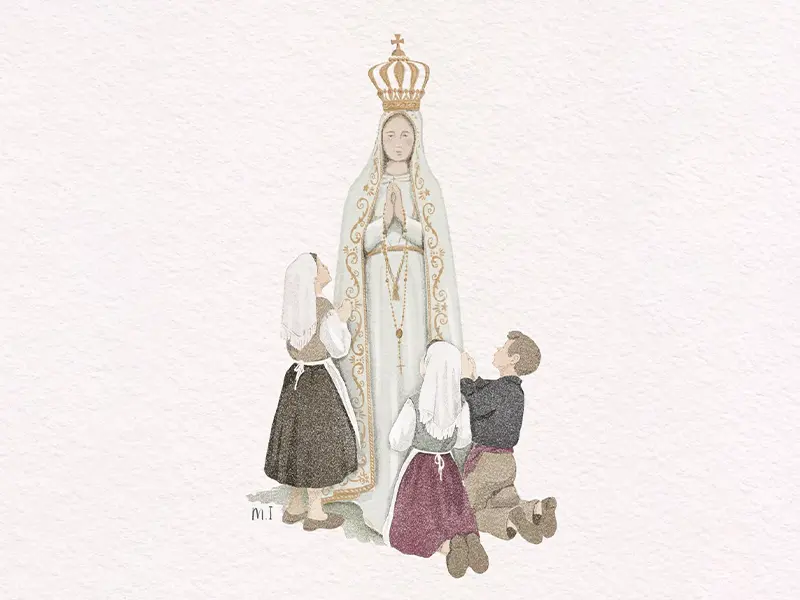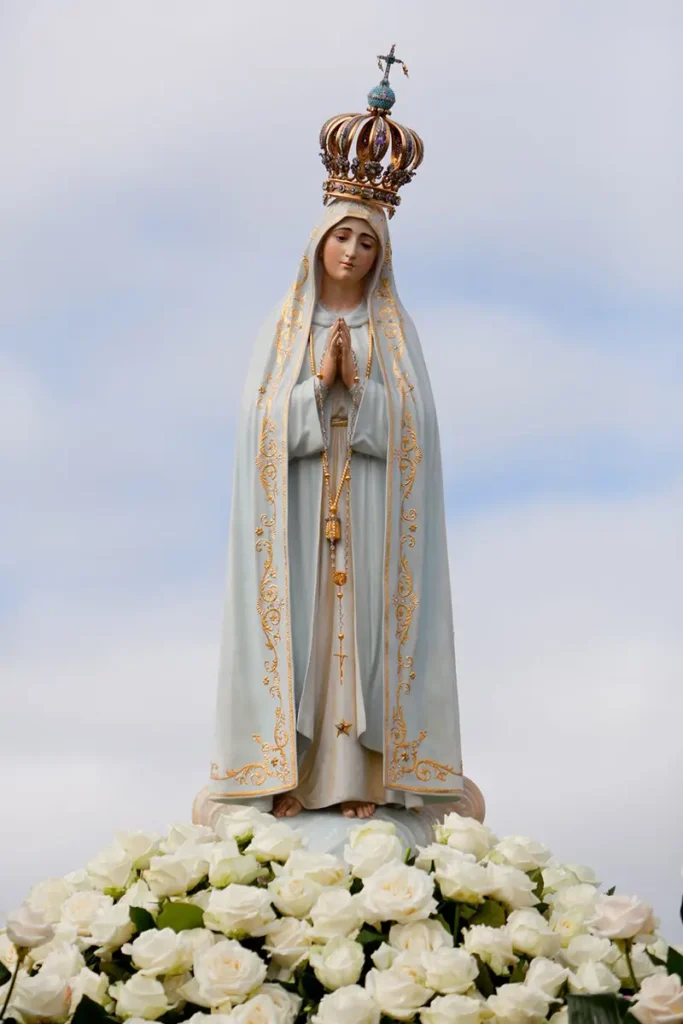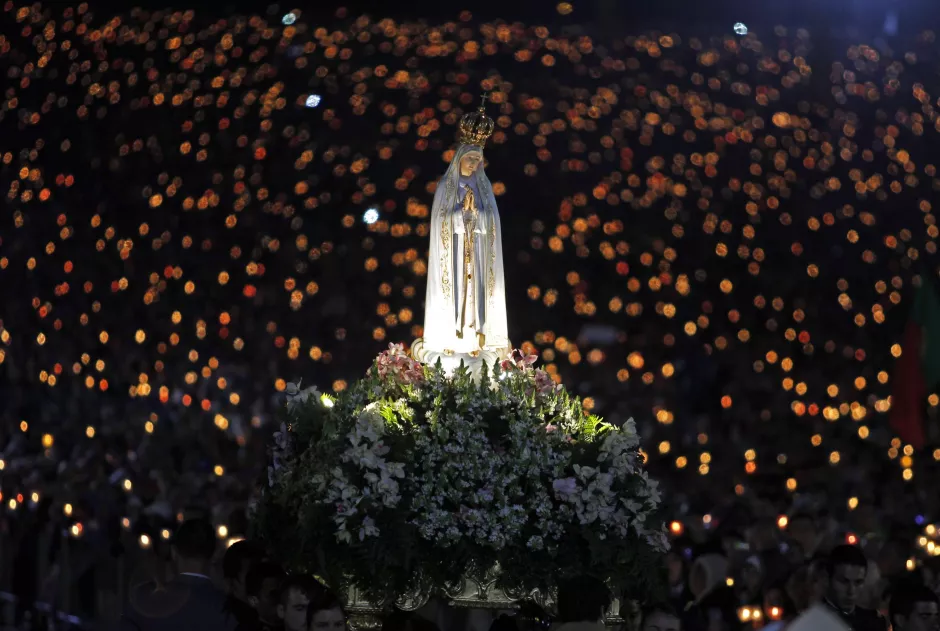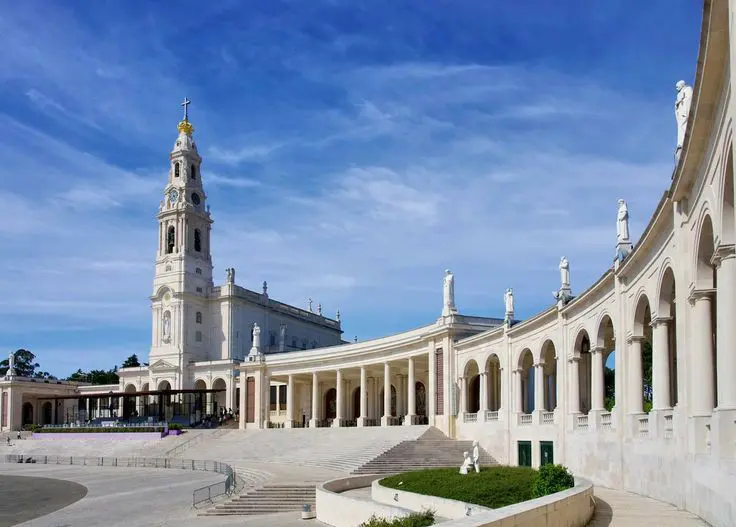
The Our Lady of Fatima is one of the best known and most venerated Marian invocations in the Catholic Church. Its history begins in a small village in Portugal and has spread throughout the world as a message of hope, conversion and peace. This Marian devotion has touched the hearts of millions of faithful who see in it a manifestation of Mary's maternal love for humanity and an urgent call to conversion.

It all began in 1917, in the village of Cova da Iria, near the town of Fátima, in central Portugal. In that year, three young shepherds - 10-year-old Lucia dos Santos and her cousins Francisco and Jacinta Marto, aged 9 and 7 respectively - claimed to have seen a "Lady brighter than the sun" during one of their shepherding days. This vision took place on May 13 and was the first of a series of six apparitions that were repeated on the 13th of each month until October of the same year.
The children described Our Lady of Fatima as a woman dressed in white, with a rosary in her hands and a countenance full of gentleness and serenity. Despite the initial skepticism of many, crowds began to flock to the site of the apparitions as rumors spread. The last apparition, on October 13, 1917, was accompanied by what became known as the "miracle of the sun," witnessed by tens of thousands of people, believers and non-believers alike. Many witnesses reported seeing the sun dance, spin around and emit extraordinary colors, before appearing to plunge to Earth and then return to its place in the sky.
Our Lady of Fatima not only appeared to the three children as an extraordinary gesture, but she came with a very specific message. Her apparition took place in a particularly convulsive historical context: Europe was in the midst of World War I and, in Russia, the communist revolution was brewing. In this context, Mary brought words that, while profoundly spiritual, have concrete implications for the history and life of the people.
In the apparitions, Our Lady of Fatima spoke mainly of three key themes: conversion of heart, penance for sins and prayer - especially of the Holy Rosary - as a means to achieve peace.

One of the best known and most debated aspects of the apparitions of Our Lady of Fatima are the so-called "three secrets". These were revelations that Our Lady confided to the little shepherds, and that would eventually be divulged, each in its own time.
In the apparition of July 13, the children received a shocking vision of hell. Lucia described it as a great sea of fire, where there were suffering souls accompanied by horrible demons. This vision was not given to spread fear, but to show the seriousness of sin and the urgent need for prayer and penance for the salvation of souls.
In that same apparition, Our Lady prophesied the coming world war (if the world did not convert) and spoke of the need to consecrate Russia to her Immaculate Heart. She said that if this was done, Russia would convert and there would be peace; otherwise, she would spread her errors throughout the world. This message was interpreted by many as a direct allusion to the atheistic communism that would spread after the Russian Revolution.
The third secret was kept secret for many years and was only publicly revealed by the Vatican in 2000. It contained a symbolic vision of a "bishop dressed in white" walking among ruins and the bodies of martyrs, and finally falling dead from gunshots. This image was interpreted as a representation of the persecutions suffered by the Church in the 20th century, and in particular it has been linked to the attack against St. John Paul II on May 13, 1981, the anniversary of the first apparition.
One of the most repeated elements in the messages of Our Lady of Fatima was the prayer of the Holy Rosary. Mary insisted that the Rosary be prayed every day to bring about peace in the world and an end to war. This insistence underscores the importance the Church attaches to this prayer as a powerful spiritual weapon.
He also asked that sacrifices be offered for the conversion of sinners and that a life of penance be lived. This does not necessarily imply great suffering, but the daily living of difficulties in a spirit of love and self-giving.

The message of Fatima is not limited to a personal experience of the three little shepherds, but has a prophetic and ecclesial dimension. The Pope Benedict XVIduring his visit to Fatima in 2010, said that "those who think that the prophetic mission of Fatima is over would be deceived. Our Lady of Fatima continues to challenge the world today, inviting us to a change of life, to a heart that is more humble, prayerful and open to God.
In addition, devotion to Our Lady of Fatima has been especially embraced by the Popes of the 20th and 21st centuries. St. John Paul II, who attributed his salvation from the May 13, 1981 attack to the protection of Our Lady of Fatima, visited the sanctuary on several occasions and consecrated the world to the Immaculate Heart of Mary. Benedict XVI and Pope Francis have also shown a deep devotion to this invocation.

More than a century after the apparitions, the message of Fatima remains profoundly relevant today. In a world marked by violence, materialism and relativism, Our Lady continues to ask for the same things: prayer, conversion and reparation. Fatima is not a message of condemnation, but of hope: the hope that, with God's help and Mary's intercession, the human heart can be transformed, history can change and good can triumph over evil.
"In the end, my Immaculate Heart will triumph," promised Our Lady of Fatima. This phrase resounds as a guiding light for believers in the midst of the darkness of the world. To trust in it is to walk with hope towards the Kingdom of God.